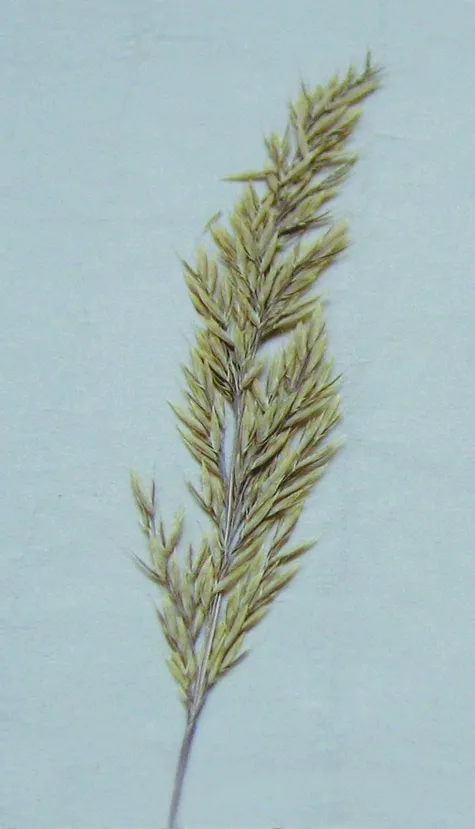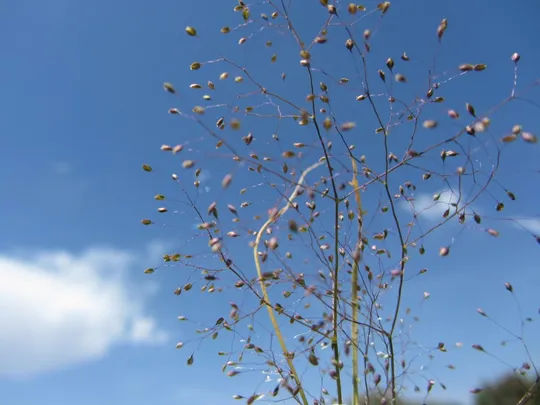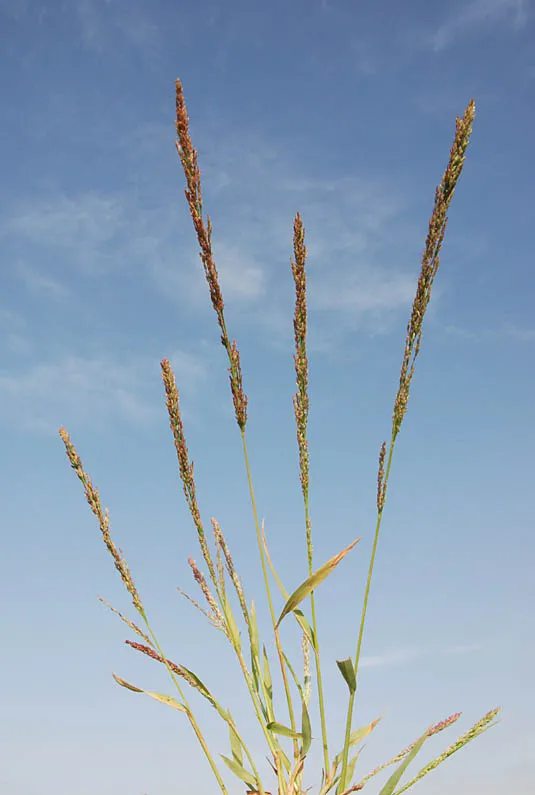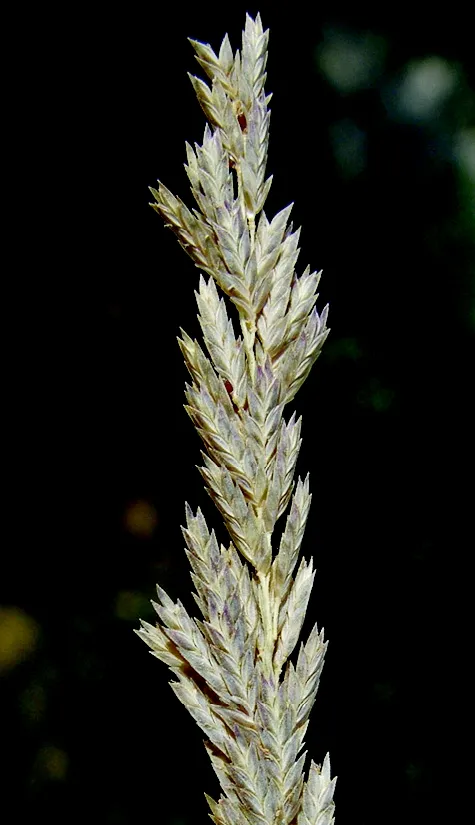Limpograss, African Jointgrass
Hemarthria altissima
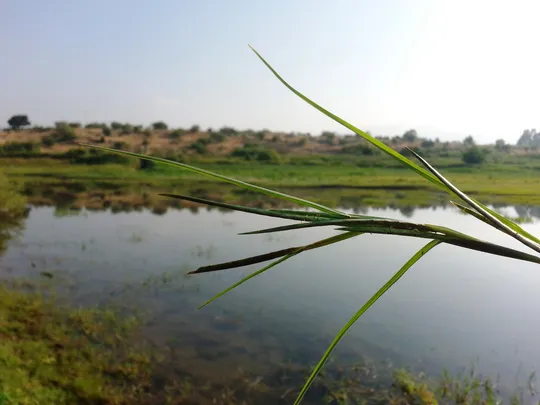
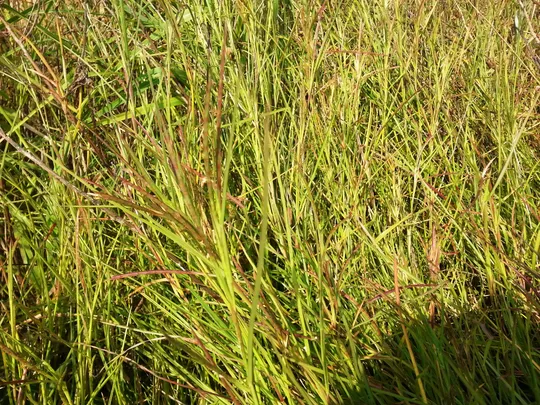
Hemarthria altissima once grew in the following regions: Philistian
Plain, Sharon, Carmel Coast, Acre Valley and the Jezreel Valley, and was considered
a common wetland species. The plant was collected in 1925-1942 from only one or
two sites in these regions. During the 1992-1996 rare species survey, H.
altissima was found in none of them. It is currently known only in the Hula
and Kinarot valleys. It was also recorded from the Upper Galilee, but the
record in the Flora Palaestina and in other plant guides is based on a
collection from 1935 near Tel Hay, that is in fact at the edges of the Hula
Valley. In the Kinarot Valley, it was collected near Dganya at the Jordan River
estuary (1925) and in the Beteha
in 1981.
The species is very rare in this region as well. The
plant is recorded in the Flora Palaestina from the Golan, but there is no
evidence to support this. The only region in which H. altissima was
common in the past and can still be seen in today, is the Hula Valley: in the past,
it was collected from eight sites, mostly in the Hula Marsh and on its edges,
and today it can be found in Ahu Gonen, in Enan and in the Tel Dan Nature
Reserve. No rare species survey was conducted in this region and therefore it
is likely that there are more sites to be found. It forms tall (20-40 cm) grass
similar to Paspalum distichum but its leaves
are broader and it has a coarser appearance.
Wetlands, moist meadows at the edge of rivulets and water
canals.
The genus Hemarthria includes 10 species, found
mainly in the tropical areas of Asia and Africa. Only one species grows in the Middle
East, and it is the northernmost species in the genus. H. altissima is similar
to the genera Parapholis, Monerma and Lolium in its arched
inflorescence, in which the spikelets are sunk along the rhachis, but is not systematically
close to them. H. altissima belongs to the Hyparrhenia tribe in the Poaceae family and is close to the genus Lasiurus
that grows in only in the Elat area. This is a tropical tribe, whose main distribution
is in the arid savannas of East Africa.
·
Hemarthria
altissima was once found in seven
regions at 22 sites, of which 6 sites in two regions are still preserved today.
This is an extremely rapid extinction rate.
·
There
is no information regarding population sizes, because it is extinct in all the
regions in which a rare species survey was conducted. In the Hula and Kinorot valleys,
no survey has been conducted yet.
·
H. altissima is now grows in the Ahu Gonen and Tel Dan nature reserves.
A field survey should be conducted in the entire to Jordan
Valley to find Hemarthria altissima populations. The
H. altissima meadows in the Ahu Gonen should be restored and the Tel Dan
habitat should be studied. H. altissima populations should be reintroduced
to the Hula Marsh and the Agamon.
Hemarthria altissima is widely distributed
in the Mediterranean Basin, in Africa and West Asia: the Canary Islands, Spain,
Italy, Sicily, Turkey, Caucasus, Cyprus and all the North African countries. In
Africa, it is found in Chad, South Africa and East Africa. It migrated to New
Zealand, Australia and tropical America.
In the Middle
East H. altissima grows in all the Nile regions of , in northeastern
Iraq, northern and western Turkey. It is not found in Lebanon and Syria, and its
presence in Arabia is uncertain.
Hemarthria altissima is a perennial Gramineae (Poaceae) that creates high meadows in moist hollows
on stream banks. Its dominant landscape has completely disappeared following
the drainage of most of the coastal plain wetlands and the Hula Marsh. All the H. altissima sites on the coastal plain and the
Jezreel Valley have become extinct, and only a few survived in the Jordan River
system. The species is a representative of the moist tropical flora (like Cyperus
papyrus and Nymphaea nouchali), for which Israel represents an
important northern extension.
Current Occupancy Map
| 1000 squre meter pixel | 5000 squre meter pixel | 10000 squre meter pixel | |
|---|---|---|---|
| number of observations | 0 | 0 | 0 |
| in total pixels | 0 | 0 | 0 |
| Family | Gramineae |
| Classification | On the endangered species list |
| Ecosystem | Mediterranean humid |
| Chorotype | Tropical and Mediterranean |
| Conservation Site | Ahu Gonen, Agamon HaHula |
| Rarity |
1
3
6
|
|---|---|
| Vulnerability |
0
4
4
|
| Attractiveness |
0
0
4
|
| Endemism |
0
0
4
|
| Red number |
1
3.7
10
|
| Peripherality | 0 |
| IUCN category | DD EW EX LC CR EN VU NT |
| Threat Definition according to the red book | Vulnerable |
 Based on:
Based on:
